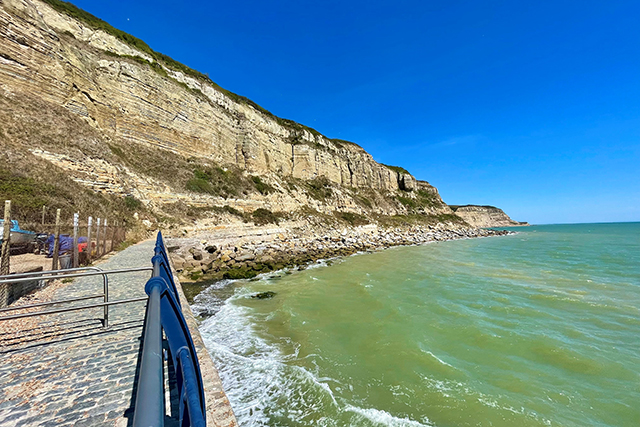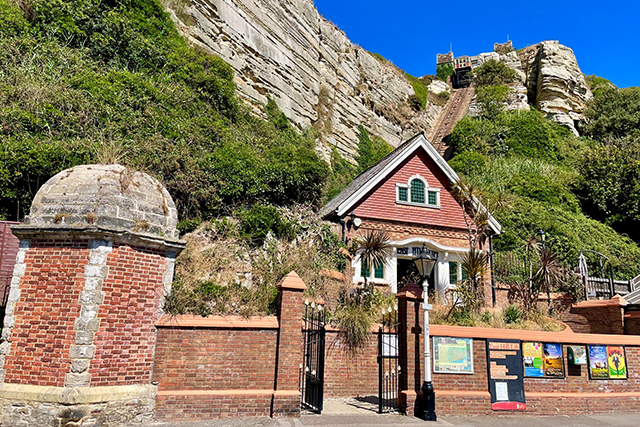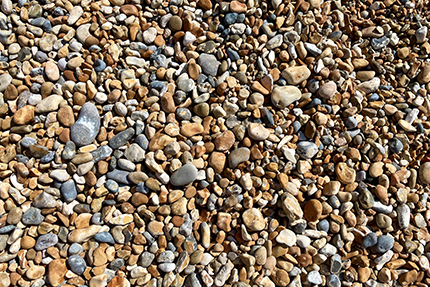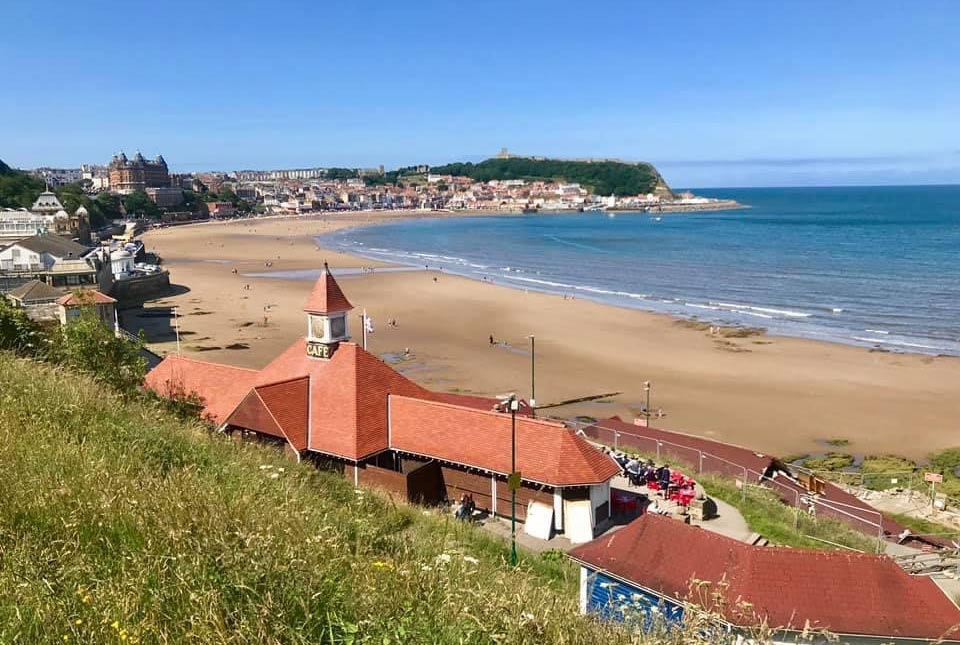Hastings is a small town on the south-east coast of the UK, most famous for the Battle of Hastings in 1066. The town became popular with tourists when the railway brought visitors to the town in Victorian times.
Around the old town there are cliffs of buff-coloured sandstone, locally known as the Hastings Sands. The ruins of the Norman Hastings Castle (once home to William the Conqueror) sit on West Hill overlooking the town. In the past, coastal erosion caused much of the castle to be lost to the sea before the present sea defences and promenades were built.
Geological setting
Hastings is part of the Weald Basin, an area of uplifted land that occupies the south-east of England (south of London, between the South and North Downs). The uplift is a result of the European and African continental plates colliding around 30 million years ago. Over time, the surface of the uplifted land has eroded, exposing the underlying rocks. Erosion is the reason why the cliffs are not capped by several hundreds of meters of clays and chalk.

The cliffs to the east of Hastings at Rock-A-Nore. © Melanie Leng.
East Hill
The best outcrops of the Hasting Sands can be seen at East Hill, with sandstones and mudstones from the Lower Cretaceous (145 to 100 million years ago) cropping out spectacularly at Rock-a-Nore, at the far eastern end of the promenade. You can take the East Hill Lift railway for a journey up through the Lower Cretaceous sandstones. The UK’s steepest funicular railway takes you through sandstone beds from Hastings foreshore to Hastings Country Park, with spectacular views over the Stade, home to Hastings’ fishing fleet.

The East Hill Lift funicular railway, Hastings. © Melanie Leng.
Beaches
Both east and west of Hastings town are vast expanses of beach. Sand is exposed at low tide but, for the most part, the beaches comprise smooth, naturally rounded flint pebbles from the Cretaceous. Flint is almost pure silica and fractures like glass, and sometimes it contains fossils of marine shells. ‘Hagstones’ (pebbles with natural holes in them) can also be found and have been part of British folklaw for centuries; they were used to ward off evil spirits and as good-luck charms.

Pebbles at Hastings. © Melanie Leng.
Fossil hunting
This is one of the best sites for fossils from this period, including remains of plants, shells, fish, turtles, crocodiles and dinosaurs. Fossils can be found in the fallen rocks on the foreshore, in particular bivalves, dinosaur bones and footprints. A good example of a dinosaur footprint cast can be found in Hastings Museum and Art Gallery on Bohemia Road. Note, the cliffs at Hastings are unstable and rocks fall frequently throughout the year. Access to the cliffs and foreshore is from Rock-a-Nore car park. Stay clear of the base of the cliffs: they are unstable and rockfalls can occur without warning.
Wildlife
Back at Rock-a-Nore, many birds can be seen on the cliffs including great black-backed gulls, turnstones, peregrine falcons and ravens. The cliffs are also home to typical seaside plants including thrift, samphire, sea beet and tree mallow. Again, please do not walk near the cliffs: they are unstable and rockfalls can occur without warning.
More information
This stretch of Hastings cliffs to Pett Beach is a site of Special Scientific Interest, designated for its renowned geological and biological importance.
Relative topics
About the author

Prof Melanie Leng
BGS Chief Scientist, environmental change, adaptation and resilience
You may also be interested in

Postcard geology
Find out more about sites of geological interest around the UK, as described by BGS staff.



